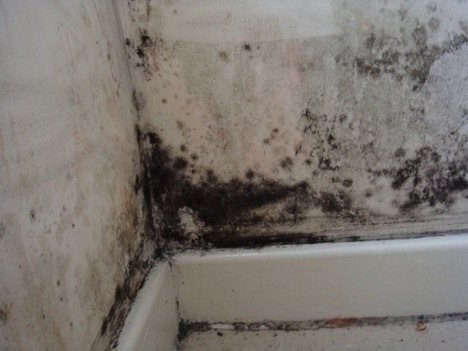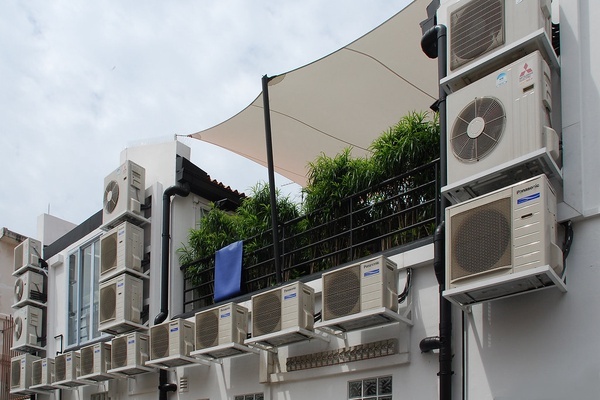Black mold must be removed as soon as it is discovered. First, the plaque is cleaned, for example, with sandpaper, after which it is processed and then washed with soapy water. About what means to use, and what to do if the mold has grown deep into the thickness of the wall, is described in this material.
The content of the article
- Reasons for the appearance and danger of mold
- Signs of mold
- Preparing for cleaning
-
How to remove mold: proven methods
- professional tools
- Folk remedies
Reasons for the appearance and danger of mold
To understand why mold is dangerous in the bathroom, it is useful to understand the reasons for its appearance. Even in apartment buildings, it appears quite often, not to mention rooms with wooden walls. There are many reasons for this phenomenon:
- High humidity level - normally it is 70-80%, but when it rises to 90% or more, mold forms in the bath in a matter of weeks.
- Warm environment - heated and humid air rises to the ceiling and there it turns into condensate. The combination of heat and moisture creates optimal conditions for mold to grow, which is why black deposits appear in the bathroom.
- There is no sunlight - usually in such rooms there are no windows, so the rays of the sun do not penetrate inside. It also encourages mold growth.
- Finally, fungi are also formed due to the fact that there is not sufficient ventilation. In fact, the bathroom is often closed, ventilation does not always work well. Because of this, moisture does not erode, and often remains warm inside.

When plaque appears, as in the photo, whiteness from mold in the bathroom or other means is used. Moreover, it is necessary to start processing as soon as possible, because constant accumulations of fungi are dangerous to human health. They can lead to many negative consequences:
- breathing problems, cough;
- exacerbation of asthma, sinusitis;
- pneumonia;
- skin rash;
- headache, malaise;
- mycosis (poisoning by mold spores);
- gastric disorders (in case of accidental ingestion).
Signs of mold
The fight against mold in the bathroom begins with a thorough inspection of the surfaces (walls, floors, ceilings). Particular attention is paid to problem areas:
- at the joints between tiles or parts of the mosaic;
- at the junction of plumbing to the floor, walls;
- in the corners, especially next to the bathroom, sink;
- in the space under the plinth;
- in different parts of the ceiling.
Quite often, plaque can be determined visually. Although in order to understand how to remove black plaque in the bathroom, you need to find all the foci. To do this, it is useful to know the signs by which you can judge the appearance of the fungus:
- characteristic spots on walls and other surfaces, especially at joints and hard-to-reach places;
- plaque can be not only black, but also blue, pink, green and whitish;
- an unpleasant smell of dampness - it smells like in a basement, in an old house (“swampy” taste); especially good it is felt while brushing your teeth;
- rust on the surface of the pipes is an indirect sign indicating an increase in the level of humidity;
- sensation of itching in the nose, sore throat;
- difficulty breathing, unreasonable exacerbation of chronic diseases - in such cases, it is urgent to resolve the issue of how to remove mold from the walls with whiteness.

Preparing for cleaning
There are quite a few anti-plaque products, such as black mold spray, vinegar solution, professional fungicides, and others. But regardless of the drug chosen, certain safety measures must first be taken:
- Be sure to wear rubber gloves while working. Also, it will not be superfluous to take a respirator or a mask, goggles. If there is too much plaque, it is advisable to use a change or disposable clothing (throw a raincoat).
- Often, mold appears on the seams of tiles in the bathroom and other hard-to-reach places. Therefore, before starting work, you need to take out all the furniture and other items. And if it is inconvenient - cover them with a thick film.
- It is easy to understand how to remove mold with whiteness and other means. But you need to take into account that you should only work with closed windows, turned on fans and air conditioners. Otherwise, the spores can spread around the room with a breath of wind.
- Sometimes a dehumidifier is installed in the apartment. If it is, the device must be turned on before and during operation.
How to remove mold: proven methods
Different methods are used for processing - folk, professional, sometimes they even use essential oils from mold. As a rule, they act in 3 stages:
- Mechanical cleaning of the surface.
- Processing by a professional or folk remedy.
- Thorough laundering with powder or liquid soap.
The fight against black mold in the bathroom begins with mechanical cleaning. To do this, the surfaces are sanded, then a vacuum cleaner with a special function. The seams are treated with a grout mixture, after which they proceed directly to processing. To do this, you can use both folk and professional means.
professional tools
If you study how to remove mold with a fungus, you can see that there are a lot of professional tools to solve this problem. Of the most effective and at the same time inexpensive, the following can be distinguished:
- Biotol spray;
- neomid;
- Belinka;
- Mellerund;
- Facade asset;
- AMSS;
- Cilit Bang;
- Unicum;
- Abedis;
- Dall.
Folk remedies
There are folk ways to prevent mold in the bathroom. After the initial cleaning of the surface, it is recommended to use the following tools:
- Hydrogen peroxide - wash the walls without diluting the pharmacy solution of 3%.
- Mold in tile joints can be eliminated with essential oils derived from lavender, rosemary, and tea tree.
- White (alcohol) vinegar 9% has a pungent odor, but it weathers well, so if there are no breathing problems, it can also be used to treat walls. The drug is used without dilution.
- Another way to wash the mold is with a solution of whiteness: the solution is diluted 10 times and the surfaces are washed.
- An equally affordable remedy is ordinary baking soda. Take a full teaspoon with a slide and dissolve in 2 glasses of water, then process with a spray bottle.
- There is also such a way how to remove mold in the seams of a tile - using ammonia. The pharmacy solution is diluted with water 2 times and sprayed with a spray gun.
- Another effective home fungicide is borax. It is diluted with water 10 times and applied to the surface with a stiff brush. Do not wash off - it is better to leave for a few days.
- Finally, mold in the seams is well destroyed with an antiseptic primer, which can be purchased at a hardware store. This method is suitable in advanced cases, when the fungus has grown deep into the walls. You have to remove all layers of plaster, getting right down to the concrete. Then they are treated with a primer, allowed to dry and plastered again, after which they make a topcoat.
Destroying mold is not very difficult if it remains only on the surface. In this case, cleaning is carried out, for example, with a brush, after which it is treated with any fungicide or folk remedy, and then with soapy water. But it is even easier to prevent the appearance of fungi. To do this, you need to regularly ventilate the room and clean the ventilation.


